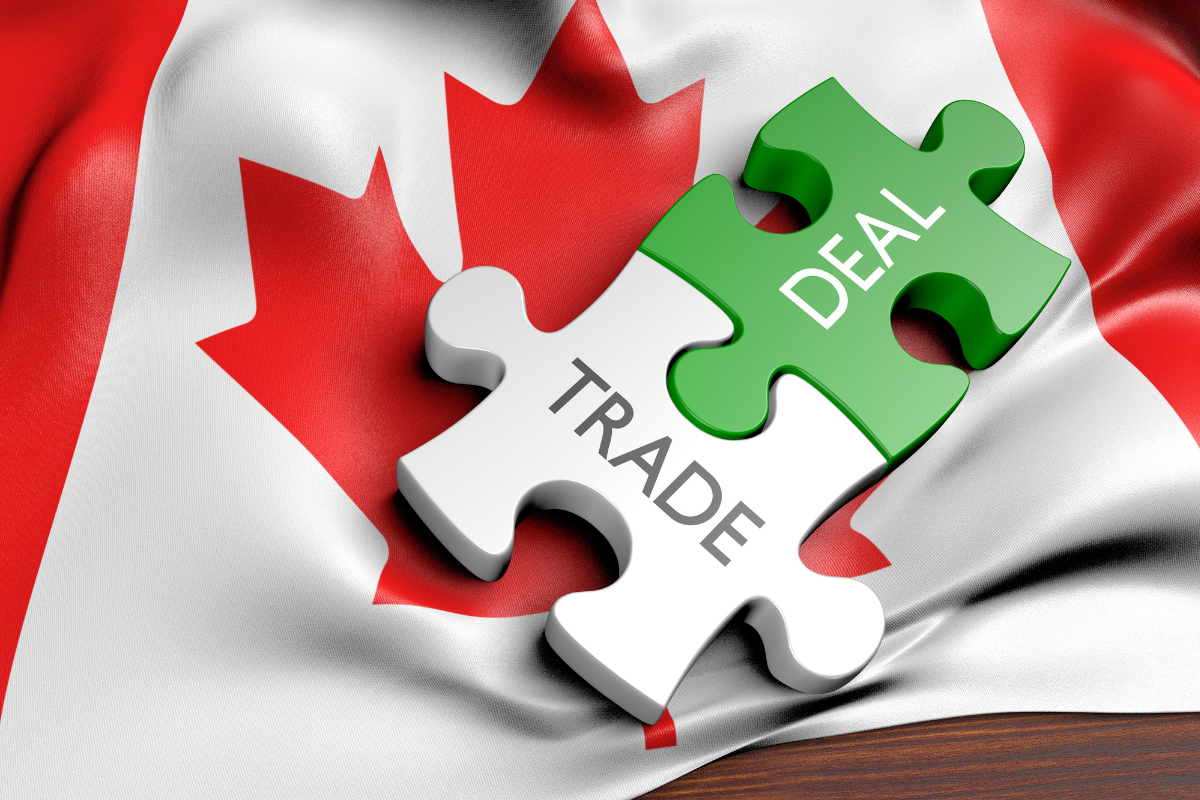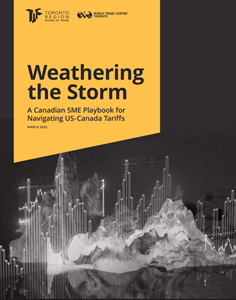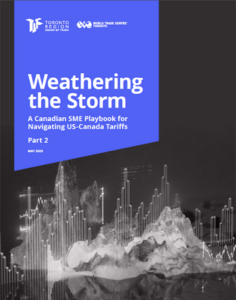The United States has imposed significant tariffs on Canadian imports, 35% on non-CUSMA compliant goods and 10% on energy exports, signaling a major shift in what has long been a stable, rules-based trade relationship. Steel and aluminum are now subject to tariffs of up to 50%, while copper and other metal products face new levies. Tariffs on autos continue to leave the sector in flux, while disrupted pricing and supply chains across manufacturing, construction, and infrastructure remain. Canadian businesses are adjusting to the realities of a deepening trade dispute. The uncertainty around tariffs continues to shape decision-making across industries.
To support businesses, especially small and medium-sized enterprises (SMEs), we’ve assembled essential resources, expert guidance, and practical tools to help manage disruption, plan strategically, and identify opportunities in a changing trade landscape.
This page is updated regularly with the latest insights and programming to help you stay informed and ready whatever comes next.
These playbooks are your concise, actionable guides to navigating this turbulent period. They are designed specifically for Canadian SME leaders who need immediate, low-cost strategies to mitigate the impact of these tariffs and emerge stronger.
Part 1 offers practical tactics for cash flow protection, cost control, supplier management, and payment term optimization.
Part 2 expands on these concepts with deeper strategies regarding customer communications, market diversification, business model adaptation, warehousing, competitive intelligence, corporate structuring, and accessing government relief.

List of products from the U.S. subject to 25% tariffs
- The webpage includes a detailed list of U.S. imports that may be impacted, organized by Harmonized System (HS) codes, aligning with Canada’s Customs Tariff Schedule to specify which products will be subject to the new 25% tariff measures.
- A free tool that allows businesses to quickly look up tariff rates for specific products and countries where Canada has a Free Trade Agreement. Users can access tariff information even without an HS code, making it easier to estimate costs for international trade.
- A searchable database that helps businesses find trade data by product using the Harmonized System (HS) code. It provides insights into import/export trends, key markets, and trade flows to support informed decision-making.
Government of Canada: Navigating U.S. Tariff Challenges
- This webpage offers insights on trade and investment with the U.S., including market trends, key policy updates, and opportunities to support cross-border business growth to help businesses navigate the Canada-U.S. economic landscape.
RBC Trade Hub: Building a Resilient Economy
- Explore RBC's Trade Hub for insights on strengthening Canada’s economy and North American trade. This resource offers expert analysis, reports, and strategies to help businesses navigate global trade challenges and opportunities.
- Access comprehensive insights into the U.S. market, including economic trends, regulatory changes, and sector-specific opportunities. This information helps Canadian businesses navigate the complexities of exporting to the U.S.
BDC: Resources for Canadian businesses facing U.S. tariffs
- Access valuable guidance for businesses affected by U.S. tariffs, including a cash flow calculator to assess financial impacts.
We provide expert consulting services to help businesses diversify their export strategies. Our offerings include export readiness assessments, market research, export plan development, and guidance on CanExport Grant applications. Our team of Certified International Trade Professionals (CITP) is here to support you at every stage of your international expansion.
For personalized assistance, contact us at wtc@bot.com.










